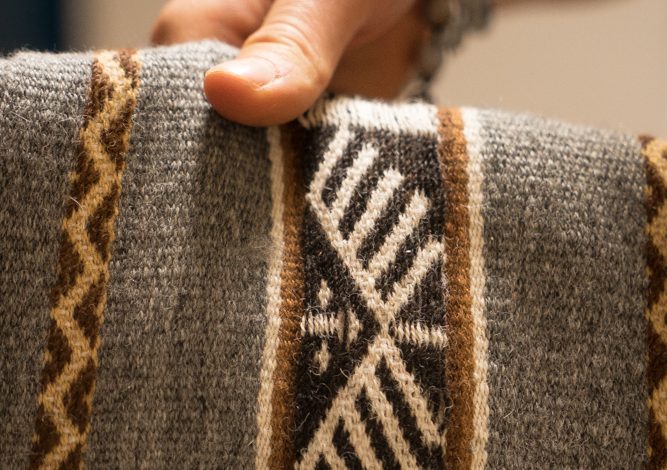
One of the most fascinating things to explore in Peru is the endless maze of textile markets. Wandering through Pisac’s Sunday stands, Cuzco’s second-hand Saturday pop-up market or a typical day in San Blas (or San Gras as locals call it) can leave one a bit dazed and confused. There’s a lot going on here. Stacked mountains of colorful mantas, rugs, sweaters, beanies, and backpacks fill endless shops. Peruvian sellers can drive a hard game in their tourist-driven economy too, so it’s easy to feel as if you’re drowning in a bargaining game with an endless supply of llama rainbow print.
The market experience here is truly magical and first time shoppers are delighted with the ubiquitous alpaca scarves, felt clutches, and psychedelic high tops. But there is something to be said for developing a keen eye and understanding of what’s going on. It’s also relatively easy to find some stunning handiwork and one-of-a-kind vintage pieces.
Peruvian textiles are a world-famous artistic tradition distinguishing different indigenous groups and preserving traditional style and belief systems. While there appears to be a never ending supply of fabric, traditional patterns and high-quality craftsmanship is sadly being lost as more Peruvians immigrate to city life and urbanize. Most people wear western clothing and sell the majority of their textile work to tourists. This friction is felt in big cities like Cuzco and even more so in Lima where women dressed in the typical dark skirt, striped mantas and tall hats are as out of place as they would be in London. Funnily, most mainstream Peruvians would be surprised to find chic fashion using manta inspired looks and tattoos patterned from Iquitos jungle designs.
That being said, there is a bigger demand for Aguas Calientes quality textiles made cheap and sold steep. While fun for a few souvenirs, it’s definitely more intricate world to the fabric here. It’s worth it to take the time to understand what’s available to you and what you’re looking at.
Here’s a few useful guidelines and photos for textile junkies:

#1 Natural Dye vs Artificial
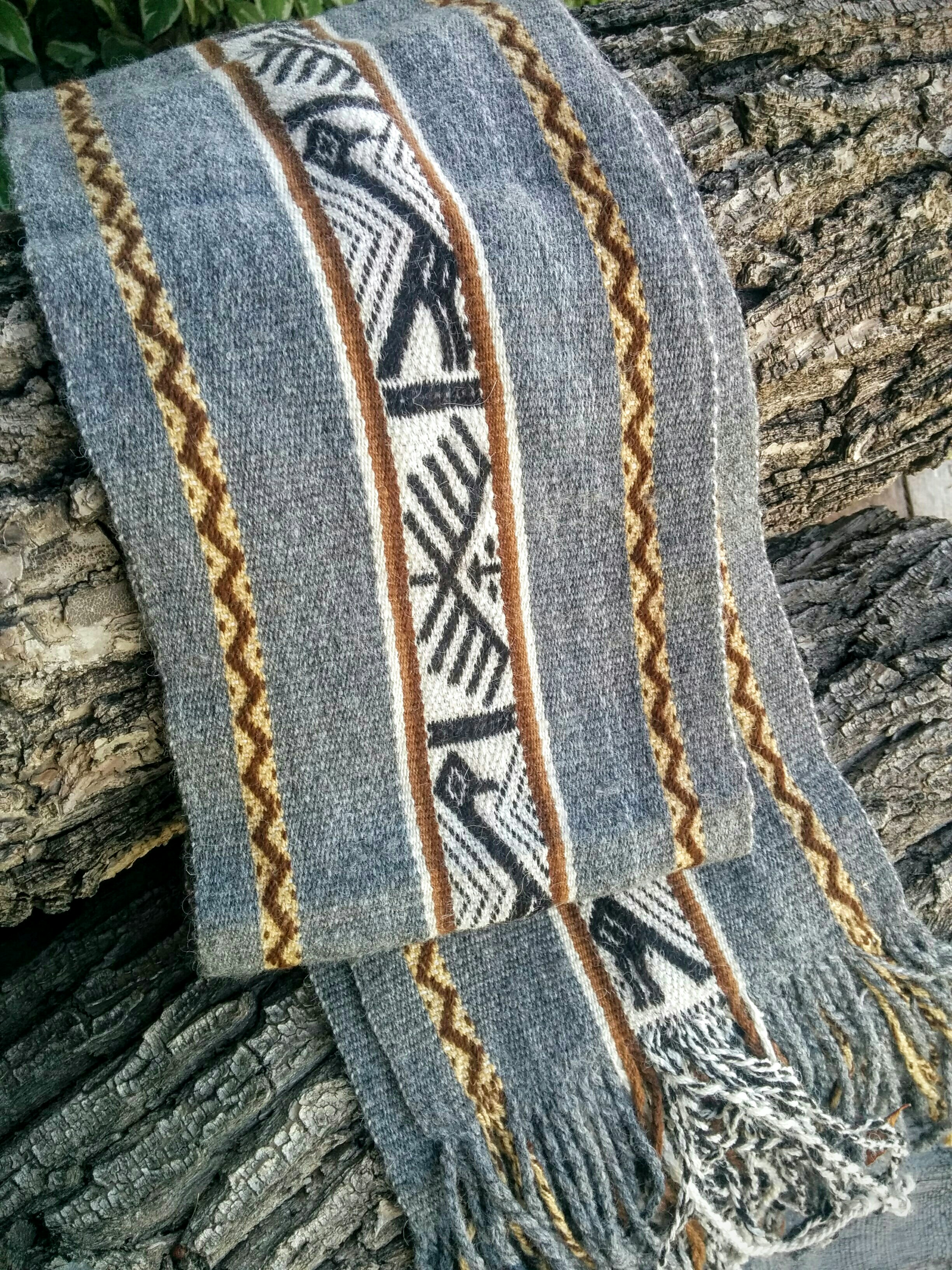
(Photo Grey Scarf from Ausangate) (Foto de chalina de gris)
This gray alpaca scarf is from a community near Ausangate. The soft gray, tan, whites, and black as all natural colors from the alpacas. Women here clean, sort, and spin the wool before weaving it on a traditional hand loom. I takes about 2 weeks of work to produce this piece on the loom.
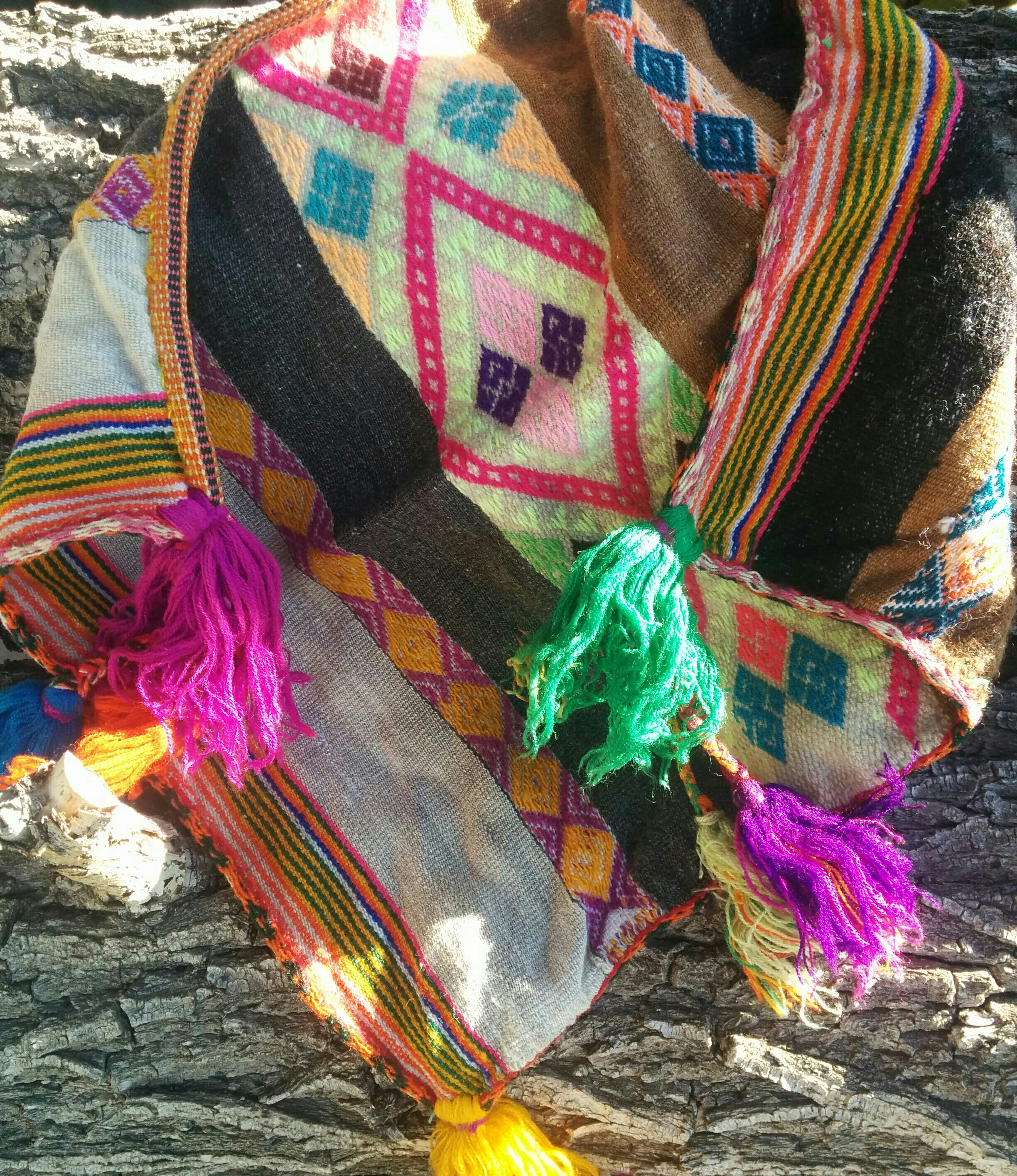
This is a ceremonial textile from Ausengate. The colors are natural pigments from local flowers. The patterning is the traditional symbols for the peaks and lakes of Apu Ausengate. Different from the easy to recognize llama design above. Women here memorize these regional patterns and pass them onto the next generation. Some women only weave to sell in tourist markets and instead opt for more generic designs for Western palate.

This electric red poncho is machine produced and artificially dyed. Most foreigners don’t believe that Peruvian natural dyes are as pungent as they appear. However, by doing a side by side comparison you’ll find artificial colors to be more harsh on the eyes and the environment as well. If you have the opportunity, buy natural.
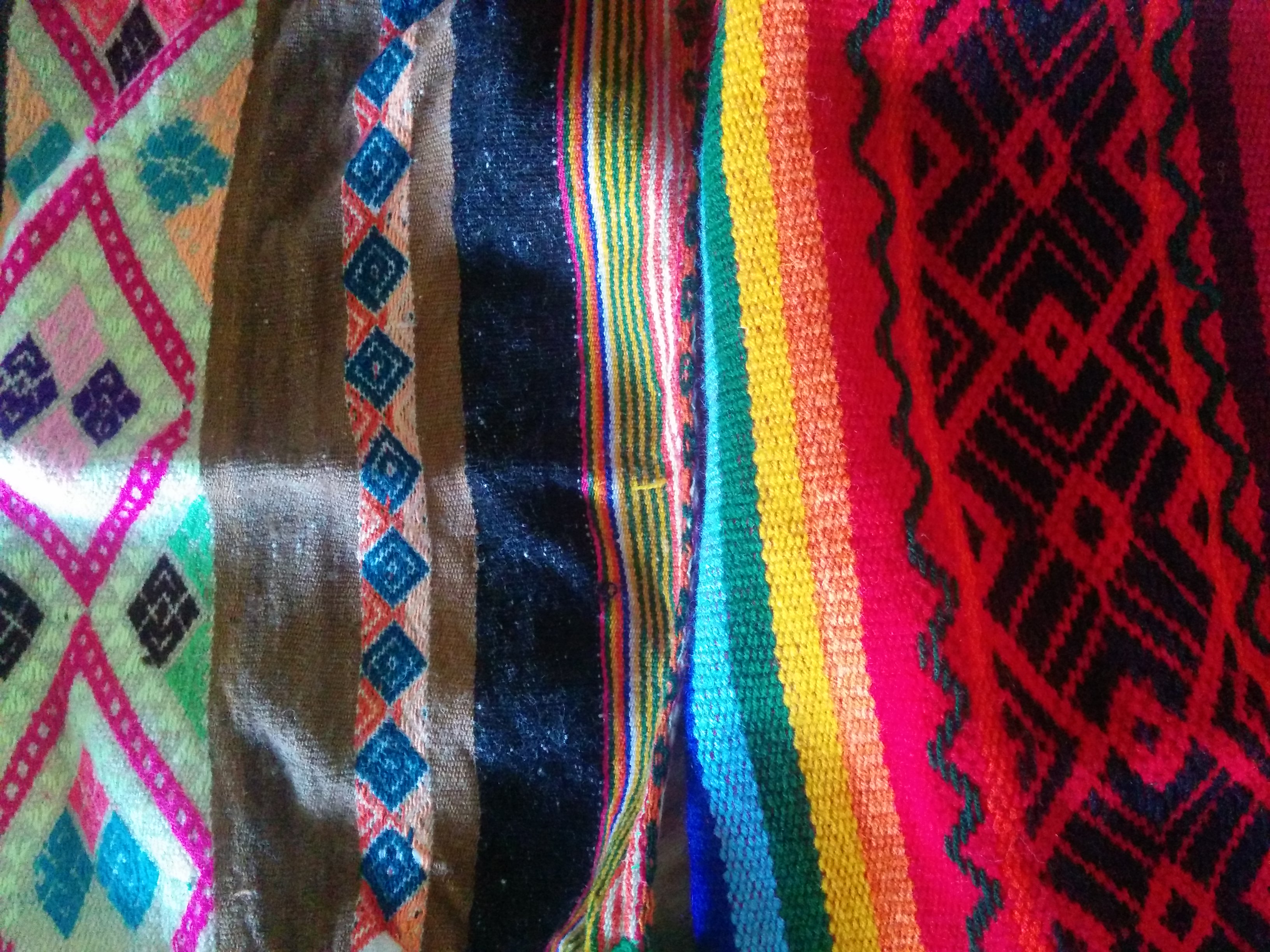
#2 Up-cycled
With Cuzco’s many dance festivals, it’s common to see old costumes or felt trim from dresses up-cycled into clutches and backpacks. There is definitely an art to this mix and match game and some women have begun to get really creative with their projects.

#3 Vintage
Smaller markets, destinations like Amaru, Pisac or the Saturday Baratillo market, are ideal for finding secondhand fabric. It’s likely that in the next five years there will be few vintage, handmade, naturally dyed weavings available. It seems fewer current artists are producing the same quality of work because they can’t compete against cheaper competition. This subtle piece is a 100 year old ceremonial cloth from Ausengate. It feels old and earthy, but the colors are still lovely.
#4 Jungle Textiles
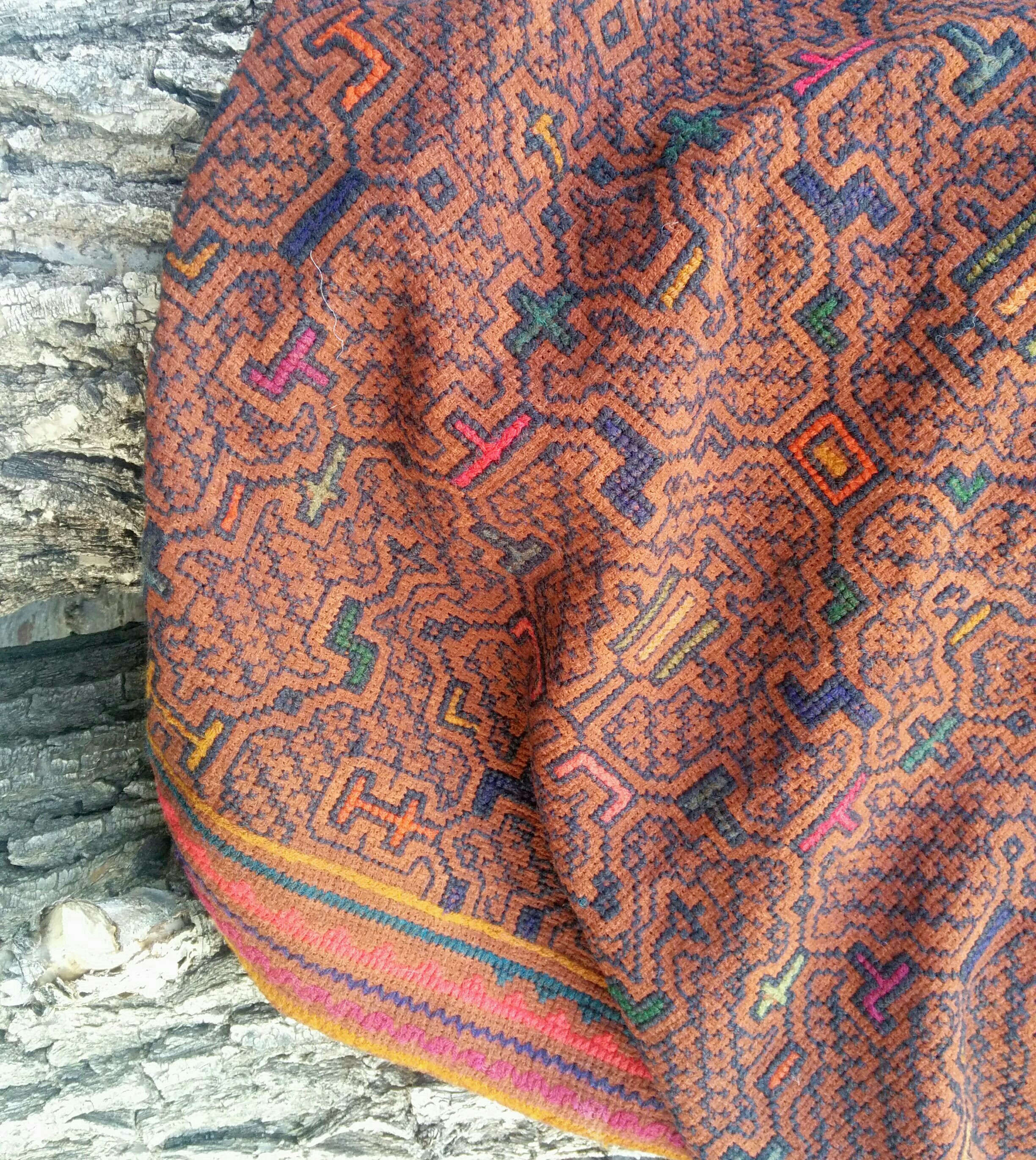
Moving away from the highland culture, you’ll find lighter material with simple black design work. These are jungle region textiles most famously made near Iquitos. In muted earth tones or striking psychedelics, its held that the people weave their ayahuasca visions, spells and societal codes in their textiles. The squared corners are said to contain the message against the roundness of pacha mama forms. These fabrics carry a magic to them that is hard to explain.

Traditional fabrics can be read as a language. They are full of traditions, spells and social class indicators. As foreign interest continues to peak in the Peruvian textile world, a mixture of traditional, mass produced, and high fashion niches like from eco-fashion labels neaandco.com and Pervianconnection.com appear. The burst of travel conscious companies like threadcaravan.com work to preserve the knowledge of traditional weaving and teach the value of handmade textile traditions. Knowing what’s out there and what’s sustainable in terms of wages and quality is the best way to preserve these art forms.




